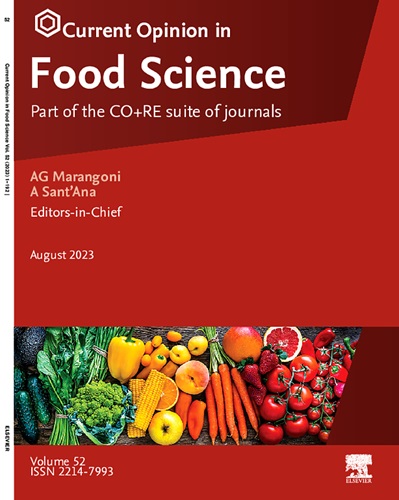比较人乳、牛乳和婴儿配方奶粉中的脂肪酸特征,以便更好地模拟
IF 9.1
1区 农林科学
Q1 FOOD SCIENCE & TECHNOLOGY
引用次数: 0
摘要
母乳中的脂肪酸(FAs)对婴儿的生长发育至关重要,尤其是在生命的头六个月。在婴儿配方奶粉(IF)中,FAs主要来源于牛乳(BM)。然而,在HM, BM和IF之间的FA模式和结构的比较数据是有限的。本文对2018年至2023年的37项研究进行了分析,提供了综合的FA特征,突出了它们在宏观模式和关键结构上的差异。对于可检测的FAs, HM和BM表现出比IF更多样化的FA种类。HM富含单不饱和脂肪酸(MUFA)和多不饱和脂肪酸(PUFA),而BM含有更高水平的饱和脂肪酸(SFA),将IF置于两者之间。MUFA(除C18:1 c9、c20:1 c9外)和PUFA (C18:2 n6、C18:2 c9 t11、C18:2 t10)的含量。增加IF中的c12和c18:3 n3),降低SFA (C6:0, C8:0, C11:0, c12:0, C17:0)的含量,以便更接近模拟HM。HM与IF的差异可能与BM作为基础成分的使用有关,主要体现在外形、结构、稳定性和生物利用度等方面。尽管有最新的进展,如添加结构脂质1,3-二油基-2-棕榈酰甘油和乳脂球膜,但在IF中完全复制HM FAs的复杂性和功能仍然具有挑战性。对这些方面的进一步调查可以揭示HM如何支持最佳婴儿健康和发育的新见解,为更先进的IF配方提供基础。本文章由计算机程序翻译,如有差异,请以英文原文为准。
Comparison of fatty acid characteristics in human milk, bovine milk, and infant formula for better emulation
Fatty acids (FAs) in human milk (HM) are essential for infant growth and development, particularly during the first six months of life. In infant formula (IF), FAs mainly originate from bovine milk (BM). However, comparative data on FA patterns and structures across HM, BM, and IF are limited. This review, analyzing 37 studies from 2018 to 2023, provides a comprehensive FA characteristic, highlighting their differences in macroscopic patterns and key structures. For detectable FAs, HM and BM exhibit more diverse FA species compared to IF. HM is richer in monounsaturated (MUFA) and polyunsaturated FAs (PUFA), while BM contains higher levels of saturated FAs (SFA), placing IF between the two. The content of MUFA (except for C18:1 c9, c20:1 c9) and PUFA (C18:2 n6, c18:2 c9 t11, c18:2 t10.c12, and c18:3 n3) in IF should be increased, and the content of SFA (C6:0, C8:0, C11:0, C12:0, C17:0) should be reduced in order to more closely simulate HM. The differences between HM and IF may be attributed to the use of BM as a base ingredient, mainly reflected in profile, structure, stability, and bioavailability. Despite the latest advancements, such as the addition of structural lipid 1,3-dioleoyl-2-palmitoylglycerol and milk fat globule membranes, fully replicating the complexity and functionality of HM FAs in IF remains challenging. Further investigation into these aspects could reveal new insights into how HM supports optimal infant health and development, providing the foundation for even more advanced IF formulations.
求助全文
通过发布文献求助,成功后即可免费获取论文全文。
去求助
来源期刊

Current Opinion in Food Science
Agricultural and Biological Sciences-Food Science
CiteScore
18.40
自引率
4.00%
发文量
157
审稿时长
92 days
期刊介绍:
Current Opinion in Food Science specifically provides expert views on current advances in food science in a clear and readable format. It also evaluates the most noteworthy papers from original publications, annotated by experts.
Key Features:
Expert Views on Current Advances: Clear and readable insights from experts in the field regarding current advances in food science.
Evaluation of Noteworthy Papers: Annotated evaluations of the most interesting papers from the extensive array of original publications.
Themed Sections: The subject of food science is divided into themed sections, each reviewed once a year.
 求助内容:
求助内容: 应助结果提醒方式:
应助结果提醒方式:


